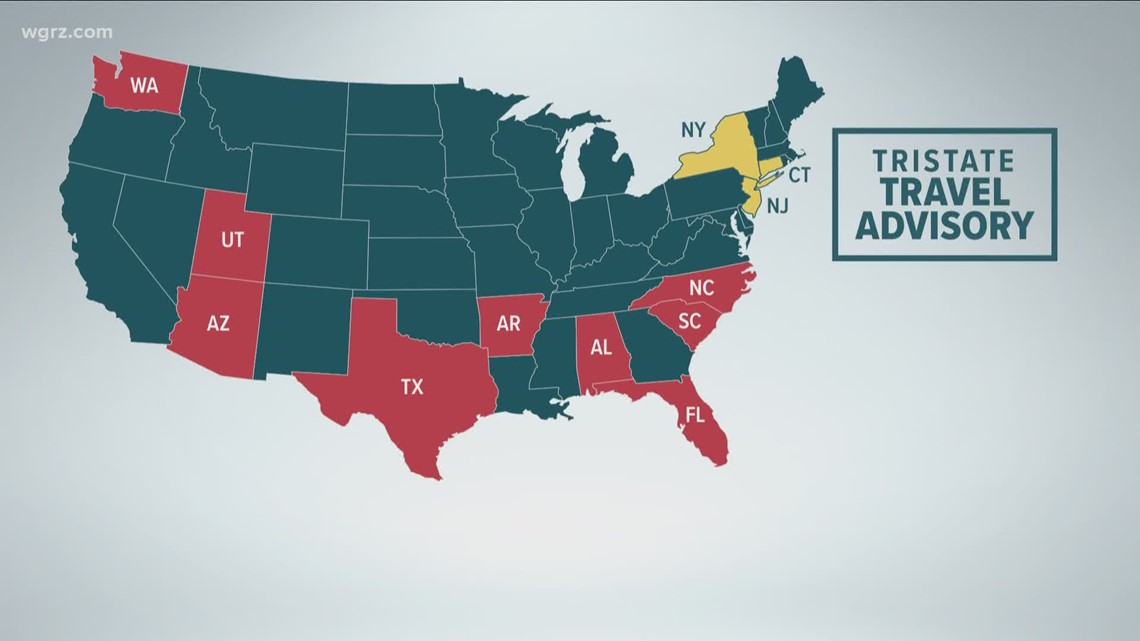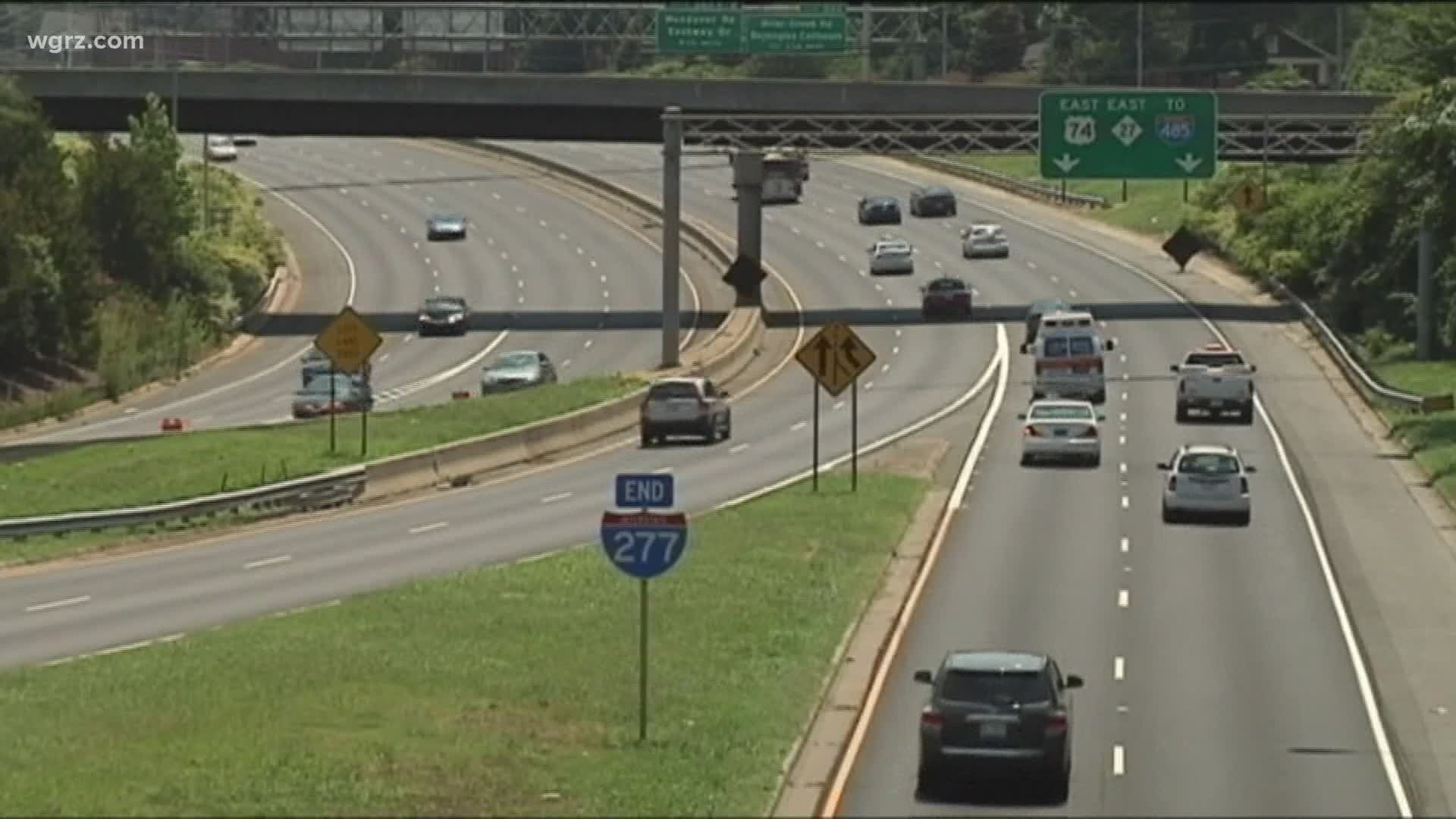NEW YORK — On Wednesday, New York Governor Andrew Cuomo announced travelers from states with high infection rates will need to quarantine for 14 days. This applies to anyone entering New York, New Jersey and Connecticut.
Cuomo also added there are penalties and fines for travelers who don't comply and get caught.
"If you are violating the quarantine, you can be subject to a judicial order and mandatory quarantine," said Cuomo.
Cuomo added that fines include $2,000 for the first violation, $5,000 for the second, and up to $10,000 if you cause harm.
2 On Your Side's Kelly Dudzik looked into how this will be enforced and impact travel: Answering your questions about the travel advisory
If you're an individual or family who hasn't needed to quarantine or self isolate yet, you might be wondering what you'll need to do after coming to New York or returning to New York after traveling.
Here's what to do if that's you:
First, ask yourself, what was my last date of travel? When did I fly or drive to New York? You'll need quarantine for two weeks from this date, as the Centers for Disease Control (CDC) says quarantine should last for two weeks after your last exposure.


You should not leave your house for those 14 days, and you should monitor for symptoms and check your temperature twice a day, according to the CDC.
If you do not have family or friends that can drop off groceries on your doorstep, you can use services like Shipt or Instacart.
Call ahead to your pharmacy, as many are now offering free prescription delivery to people who may have been exposed to or have COVID-19.
Do not interact with people who are at higher risk of getting very sick from COVID-19, if possible, while you are under quarantine.
If you develop symptoms at any point, you will want to enter isolation, which is where you separate yourself from other members of your home, including your pets. If you can stay in a specific room and use a separate bathroom, that is best.
Some health departments, such as Allegany County, have recommended getting tested if you've traveled.
If you are symptomatic, you can call your doctor or local health department for a test. Some counties are testing individuals who do not have symptoms.
For more on testing, symptoms, and the coronavirus, see below.
Testing
Diagnostic testing tests for an active infection and usually done with a nose swab. Typically, a health care worker will either collect the test for you or guide you through swabbing yourself.
In Erie County:
Erie County Department of Health offers diagnostic testing; you must call 716-858-2929 to schedule a test. A doctor's order is not needed to be tested and you do not have to be symptomatic.
Your doctor can provide you with a lab order and directions on where to get tested. If you don't have a doctor, the county keeps a list of ones accepting new patients here.
The county also keeps a virtual map of testing locations with requirements and phone numbers, you can view that by clicking here.
In Niagara County: Niagara County offers free drive through sample collection every Wednesday. You must pre-register. Essential workers who work directly with the public should call the department of health's Nursing Division at 716-278-1900 to pre-register.
There is also a NYS diagnostic test drive-thru site at Niagara County Community College, 3111 Saunders Settlement Rd, Sanborn, NY. You can call 1-888-364-3065 or click here to register.
You can also visit the Niagara Falls Memorial Medical Center, by appointment from 8 a.m. to 12 noon daily on Memorial’s downtown Niagara Falls campus, or behind the Summit Healthplex on certain days. For more information, click here.
In Chautauqua County: Diagnostic testing is available at UPMC Chautauqua’s Jones Hill campus and at The Chautauqua Center’s Jamestown and Dunkirk locations, and at Westfield Memorial Hospital. You must have a doctor's order to get a test at these locations. The county department of health recommends anyone with symptoms contact their doctor about testing. Any essential worker with or without symptoms can also request to get tested.
In Wyoming County: call 585-786-8890 if you think you need a test.
Please note Kaleida Health no longer offers diagnostic tests to the public (anyone outside their care or employment).
Through Quest Diagnostics: Quest does drive through testing at certain Walmart locations. They do not test at Quest sample collection centers. Click here to schedule a test and see locations.
Coronavirus symptoms
The symptoms of coronavirus can be similar to the flu or a bad cold. Symptoms include a fever, cough and shortness of breath, according to the Centers for Disease Control.
Most healthy people will have mild symptoms. A study of more than 72,000 patients by the Centers for Disease Control in China showed 80 percent of the cases there were mild.
But infections can cause pneumonia, severe acute respiratory syndrome, kidney failure and even death, according to the World Health Organization. Older people with underlying health conditions are most at risk.
The CDC believes symptoms may appear anywhere from two to 14 days after being exposed.
Human coronaviruses are usually spread through...
The air by coughing or sneezing
Close personal contact, such as touching or shaking hands
The CDC also said it may be possible to spread COVID-19 by touching an object or surface with the virus on it, then touching your mouth, nose or eyes before washing your hands. However, it's not believed to be the main way the virus is spread.
Help stop the spread of coronavirus
Stay home when you are sick.
Eat and sleep separately from your family members
Use different utensils and dishes
Cover your cough or sneeze with your arm, hot your hand.
If you use a tissue, throw it in the trash.
Lower your risk
Wash your hands often with soap and water for at least 20 seconds. If soap and water are not available, use an alcohol-based hand sanitizer.
Avoid touching your eyes, nose, and mouth with unwashed hands.
Avoid close contact with people who are sick.
Clean and disinfect frequently touched objects and surfaces.
If you are 60 or over and have an underlying health condition such as cardiovascular disease, diabetes or respiratory illnesses like asthma or COPD, the World Health Organization advises you to try to avoid crowds or places where you might interact with people who are sick.

